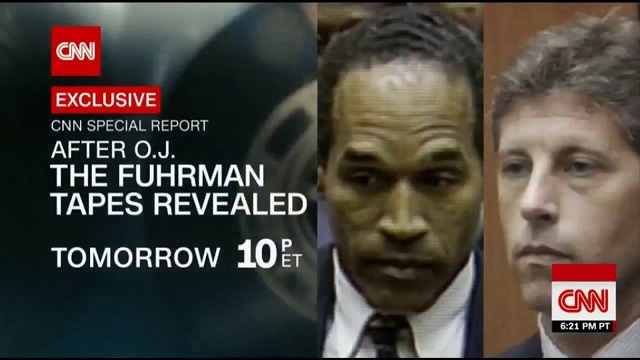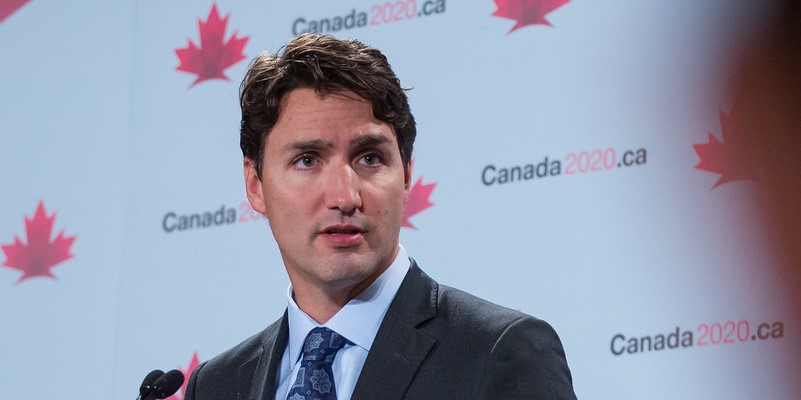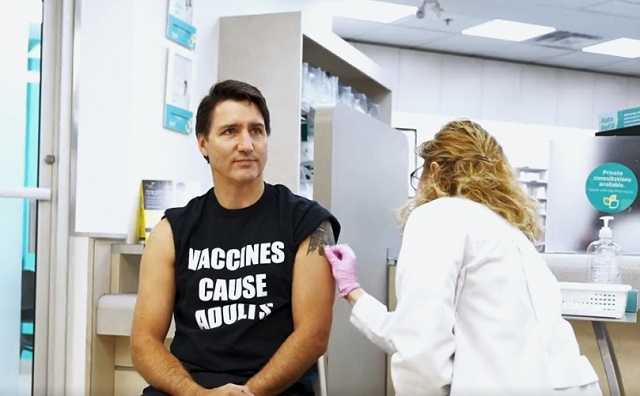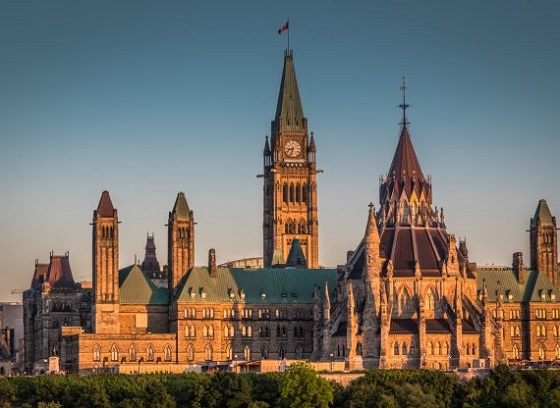Uncategorized
Election Day tests Democratic resistance in Trump era
WASHINGTON — A turbulent election season that tested President Donald Trump’s slash-and-burn political style against the strength of the Democratic resistance comes to a close as Americans cast ballots in the first national election of the Trump era.
With voters going to the polls Tuesday, nothing is certain. Weather could affect turnout, with residents of several states in the Deep South and Mid-Atlantic contending with thunderstorms, high winds and power outages.
Anxious Republicans privately expressed confidence in their narrow Senate majority but feared the House was slipping away. Trump, the GOP’s chief messenger, warned that significant Democratic victories would trigger devastating consequences.
“If the radical Democrats take power they will take a wrecking ball to our economy and our future,” Trump declared in Cleveland, using the heated rhetoric that has defined much of his presidency. He added: “The Democrat agenda is a socialist nightmare.”
Democrats, whose very relevance in the Trump era depended on winning at least one chamber of Congress, were laser-focused on health care as they predicted victories that would break up the GOP’s monopoly in Washington and state governments.
“They’ve had two years to find out what it’s like to have an unhinged person in the White House,” said Washington Gov. Jay Inslee, who leads the Democratic Governors Association. “It’s an awakening of the Democratic Party.”
Democrats could derail Trump’s legislative agenda for the next two years should they win control of the House or the Senate. Perhaps more important, they would claim subpoena power to investigate Trump’s personal and professional shortcomings.
Some Democrats have vowed to force the release of his tax returns. Others have pledged to pursue impeachment, although removal from office is unlikely so long as the GOP controls the Senate or maintains even a healthy minority.
Democrats’ fate depends upon a delicate coalition of infrequent voters — particularly young people and minorities — who traditionally shun midterm elections.
If ever there was an off-year election for younger voters to break tradition, this is it. Young voters promised to vote in record numbers as they waged mass protests in the wake of the February mass shooting at a Parkland, Florida, high school that left 17 students and staff dead.
Democrats are drawing strength from women and college-educated voters, who swung decidedly against Trump since his election. Polling suggests the Republican coalition is increasingly older, whiter, more male and less likely to have a college degree.
Democrats boast record diversity on the ballot.
Three states could elect their first African-American governors, while several others are running LGBT candidates and Muslims. A record number of women are also running for Senate, House, governorships and state legislative seats.
“The vast majority of women voters are angry, frustrated and they are really done with seeing where the Republican Party is taking them, particularly as it related to heath care and civility,” said Stephanie Schriock, who leads EMILY’s List, a group that help elect Democratic women. “You’re going to see the largest gender gap we’ve ever seen.”
The political realignment, defined by race, gender and education, could re-shape U.S. politics for a generation. The demographic shifts also reflect each party’s closing argument.
While the economy continues to thrive, Trump has spent much of the campaign’s final days railing against a caravan of Latin American immigrants hoping to seek asylum at the U.S. border. He dispatched more than 5,000 troops to the region, suggesting soldiers would use lethal force against migrants who throw rocks, before later reversing himself.
Republicans have privately encouraged the president to back off, to no avail.
Democrats, meanwhile, have beat their drum on health care.
“Health care is on the ballot,” former President Barack Obama told Democratic volunteers in Virginia. “Health care for millions of people. You vote, you might save a life.”
Tuesday’s results will be colored by the dramatically different landscapes in the fight for the House and Senate.
Most top House races are set in America’s suburbs where more educated and affluent voters in both parties have soured on Trump’s presidency, despite the strength of the national economy. Democrats were buoyed by a wave of Republican retirements and an overwhelming fundraising advantage.
Jay Hutchins, a 49-year-old Democrat who voted in the Washington suburb of Silver Spring, Maryland, is among those dissatisfied with Trump and the Republican-led Congress.
“I’m not pleased with Trump’s leadership at all. I think he’s trying to divide this country,” said Hutchins, a
But in Ohio, Judy Jenkins, a 60-year-old Republican, said she was voting exclusively for GOP candidates. She said she used to vote for candidates from both major parties, but vowed never to support a Democrat because she was so upset by how new Supreme Court Justice Brett Kavanaugh was treated in his confirmation process. She also backs Trump and said Republicans are moving in the right direction on health care.
Republicans “have actually brought the change,” she said. “That’s why our economy is growing like it is. They may not be perfect, but who is?”
Democrats need to pick up two dozen seats to claim the House majority.
They face a far more difficult challenge in the Senate, where they are almost exclusively on
Democrats need to win two seats to claim the Senate majority.
Given Trump’s stunning victory in 2016, few were confident in their predictions.
“I feel less comfortable making a prediction today than I have in two decades,” Republican pollster Frank Luntz said.
___
Associated Press writers Kantele Franko in Westerville, Ohio, Michael Kunzelman in Silver Spring, Maryland and Eric Tucker in Washington contributed to this report.
For AP’s complete coverage of the U.S. midterm elections: http://apne.ws/APPolitics
Steve Peoples, The Associated Press
Alberta
Oil and gas in the global economy through 2050
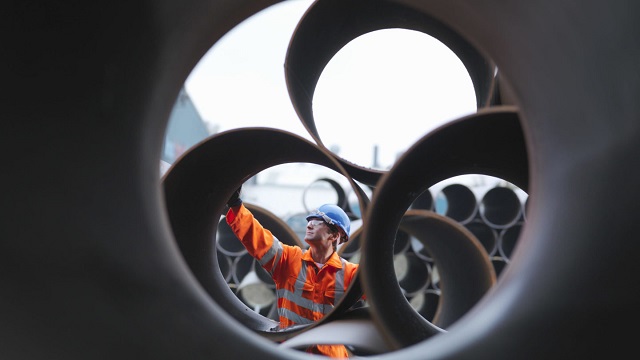
From the Canadian Energy Centre
The world will continue to rely on oil and gas for decades to come, according to the International Energy Agency
Recent global conflicts, which have been partly responsible for a global spike in energy prices, have cast their shadow on energy markets around the world. Added to this uncertainty is the ongoing debate among policymakers and public institutions in various jurisdictions about the role of traditional forms of energy in the global economy.
One widely quoted study influencing the debate is the International Energy Agency’s (IEA) World Energy Outlook, the most recent edition of which, World Energy Outlook 2023 (or WEO 2023), was released recently (IEA 2023).
In this CEC Fact Sheet, we examine projections for oil and natural gas production, demand, and investment drawn from the World Energy Outlook 2023 Extended Dataset, using the IEA’s modelled scenario STEPS, or the Stated Policies Scenario. The Extended Dataset provides more detailed data at the global, regional, and country level than that found in the main report.
The IEA’s World Energy Outlook and the various scenarios
Every year the IEA releases its annual energy outlook. The report looks at recent energy supply and demand, and projects the investment outlook for oil and gas over the next three decades. The World Energy Outlook makes use of a scenario approach to examine future energy trends. WEO 2023 models three scenarios: the Net Zero Emissions by 2050 Scenario (NZE), the Announced Pledges Scenario (APS), and the Stated Policies Scenario (STEPS).
STEPS appears to be the most plausible scenario because it is based on the world’s current trajectory, rather than the other scenarios set out in the WEO 2023, including the APS and the NZE. According to the IEA:
The Stated Policies Scenario is based on current policy settings and also considers the implications of industrial policies that support clean energy supply chains as well as measures related to energy and climate. (2023, p. 79; emphasis by author)
and
STEPS looks in detail at what [governments] are actually doing to reach their targets and objectives across the energy economy. Outcomes in the STEPS reflect a detailed sector-by-sector review of the policies and measures that are actually in place or that have been announced; aspirational energy or climate targets are not automatically assumed to be met. (2023, p. 92)
Key results
The key results of STEPS, drawn from the IEA’s Extended Dataset, indicate that the oil and gas industry is not going into decline over the next decade—neither worldwide generally, nor in Canada specifically. In fact, the demand for oil and gas in emerging and developing economies under STEPS will remain robust through 2050.
Oil and natural gas production projections under STEPS
World oil production is projected to increase from 94.8 million barrels per day (mb/d) in 2022 to 97.2 mb/d in 2035, before falling slightly to 94.5 mb/d in 2050 (see Figure 1).

Source: IEA (2023b)
Canadian overall crude oil production is projected to increase from 5.8 mb/d in 2022 to 6.5 mb/d in 2035, before falling to 5.6 mb/d in 2050 (see Figure 2).

Source: IEA (2023b)
Canadian oil sands production is expected to increase from 3.6 mb/d in 2022 to 3.8 mb/d in 2035, and maintain the same production level till 2050 (see Figure 3).

Source: IEA (2023b)
World natural gas production is anticipated to increase from 4,138 billion cubic metres (bcm) in 2022 to 4,173 bcm in 2050 (see Figure 4).

Source: IEA (2023b)
Canadian natural gas production is projected to decrease from 204 bcm in 2022 to 194 bcm in 2050 (see Figure 5).

Source: IEA (2023b)
Oil demand under STEPS
World demand for oil is projected to increase from 96.5 mb/d in 2022 to 97.4 mb/d by 2050 (see Tables 1A and 1B). Demand in Africa for oil is expected to increase from 4.0 mb/d in 2022 to 7.7 mb/d in 2050. Demand for oil in the Asia-Pacific is projected to increase from 32.9 mb/d in 2022 to 35.1 mb/d in 2050. Demand for oil from emerging and developing economies is anticipated to increase from 47.9 mb/d in 2022 to 59.3 mb/d in 2050.

Source: IEA (2023b)

Source: IEA (2023b)
Natural gas demand under STEPS
World demand for natural gas is expected to increase from 4,159 billion cubic metres (bcm) in 2022 to 4,179 bcm in 2050 (see Figures 6 and 7). Demand in Africa for natural gas is projected to increase from 170 bcm in 2020 to 277 bcm in 2050. Demand in the Asia-Pacific for natural gas is anticipated to increase from 900 bcm in 2020 to 1,119 bcm in 2050.

Source: IEA (2023b)

Source: IEA (2023b)
Cumulative oil and gas investment expected to be over $21 trillion
Taking into account projected global demand, between 2023 and 2050 the cumulative global oil and gas investment (upstream, midstream, and downstream) under STEPS is expected to reach nearly U.S.$21.1 trillion (in $2022). Global oil investment alone is expected to be over U.S.$13.1 trillion and natural gas investment is predicted to be over $8.0 trillion (see Figure 8).
Between 2023 and 2050, total oil and gas investment in North America (Canada, the U.S., and Mexico) is expected to be nearly U.S.$5.6 trillion, split between oil at over $3.8 trillion and gas at nearly $1.8 trillion (see Figure 8). Oil and gas investment in the Asia Pacific, over the same period, is estimated at nearly $3.3 trillion, split between oil at over $1.4 trillion and gas at over $1.9 trillion.

Source: IEA (2023b)
Conclusion
The sector-by-sector measures that governments worldwide have put in place and the specific policy initiatives that support clean energy policy, i.e., the Stated Policies Scenario (STEPS), both show oil and gas continuing to play a major role in the global economy through 2050. Key data points on production and demand drawn from the IEA’s WEO 2023 Extended Dataset confirm this trend.
Positioning Canada as a secure and reliable oil and gas supplier can and must be part of the medium- to long-term solution to meeting the oil and gas demands of the U.S., Europe, Asia and other regions as part of a concerted move supporting energy security.
The need for stable energy, which is something that oil and natural gas provide, is critical to a global economy whose population is set to grow by another 2 billion people by 2050. Along with the increasing population comes rising incomes, and with them comes a heightened demand for oil and natural gas, particularly in many emerging and developing economies in Africa, the Asia-Pacific, and Latin America, where countries are seeing urbanization and industrialization grow rapidly.
References (as of February 11, 2024)
International Energy Agency (IEA), 2023(a), World Energy Outlook 2023 <http://tinyurl.com/4nv9xyfj>; International Energy Agency (IEA), 2023(b), World Energy Outlook 2023 Extended Dataset <http://tinyurl.com/3222553b>.
Uncategorized
Chrystia Freeland refuses to answer how much Trudeau government has collected via carbon tax
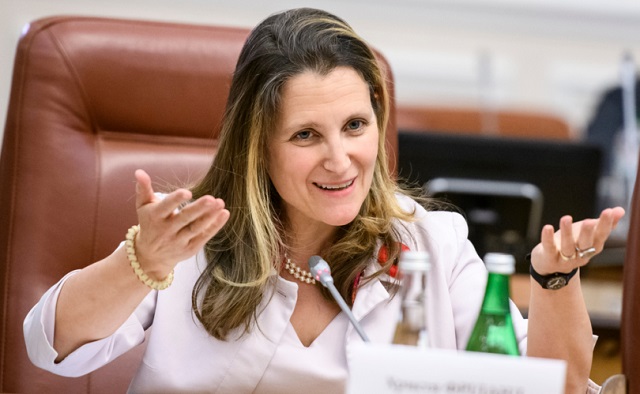
From LifeSiteNews
Deputy Prime Minister and Finance Minister Chrystia Freeland continues to claim that the revenue from the carbon tax ‘goes back to Canadians’ despite data showing otherwise.
Canadian Deputy Prime Minister and Finance Minister Chrystia Freeland has refused to reveal how much Liberals have collected via the unpopular carbon tax, which is set to go up again on April 1.
During a March 21 session in the House of Commons, Conservative Member of Parliament (MP) Marty Morantz questioned Freeland regarding how much the Liberal government has taken in through the carbon tax.
“How much has your government collected in carbon taxes?” Morantz asked.
Freeland responded by dodging the question, stating, “[This is] also an opportunity for me to point out that Manitoba families will be getting $1,200 this year.”
“Again, minister, if I could just have the number [of] how much you’ve collected in carbon taxes,” Morantz pressed.
Freeland again refused to answer, instead claiming that the “key point” is that the “price on pollution” is “revenue neutral.”
As Morantz persisted in his question, Freeland alleged that the revenue from the carbon tax is “all money that goes back to Canadians.”
However, this statement has been proven untrue as the Parliamentary Budget Officer recently revealed that the government rebates are insufficient to cover the rising costs of fuel under Trudeau’s carbon tax, causing many to wonder where their money is actually going.
According to records published in December, the carbon tax cost Canadians nearly $200 million in paperwork since Prime Minister Justin Trudeau introduced the fuel charge in 2019.
Trudeau’s carbon tax, framed as a way to reduce carbon emissions, has cost Canadian households hundreds of dollars annually despite rebates when factoring in the indirect costs associated with the measure.
The costs are only expected to rise, as a recent report revealed that a carbon tax of more than $350 per tonne is needed to reach Trudeau’s net-zero goals by 2050.
Currently, Canadians living in provinces under the federal carbon pricing scheme pay $65 per tonne, but the Trudeau government has a goal of $170 per tonne by 2030.
Additionally, Trudeau has refused to pause the carbon tax hike scheduled for April 1, despite seven out of ten provincial premiers and 70 percent of Canadians pleading with him to halt his plan.
Meanwhile, Trudeau and his cabinet continue to attend lavish retreats, with a recent Liberal retreat costing taxpayers nearly $500,000.
During a media interview following the nearly $500,000 retreat, Trudeau told Canadians struggling with the high cost of living that times are also difficult for politicians.
“Yeah, people are facing tough times, and yes, everyone is finding it difficult right now. And as leaders, MPs, parliamentarians of all types, part of our job is to be there to take it, to support it as Canadians are worried and anxious, and put out those solutions,” he said.
“So yeah, it’s not an easy time to be a politician,” Trudeau lamented.
-

 Economy7 hours ago
Economy7 hours agoExtreme Weather and Climate Change
-

 Jordan Peterson1 day ago
Jordan Peterson1 day agoJordan Peterson slams CBC for only interviewing pro-LGBT doctors about UK report on child ‘sex changes’
-

 Freedom Convoy1 day ago
Freedom Convoy1 day agoTrudeau’s use of Emergencies Act has cost taxpayers $73 million thus far
-

 COVID-192 days ago
COVID-192 days agoPro-freedom Canadian nurse gets two years probation for protesting COVID restrictions
-
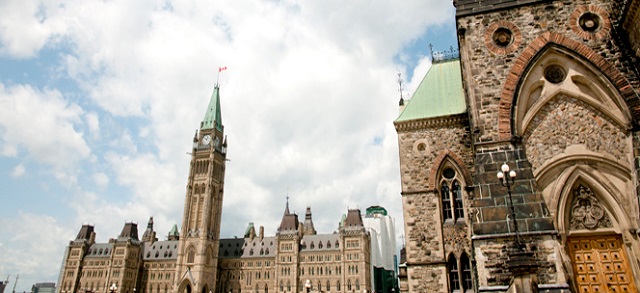
 Economy2 days ago
Economy2 days agoMassive deficits send debt interest charges soaring
-
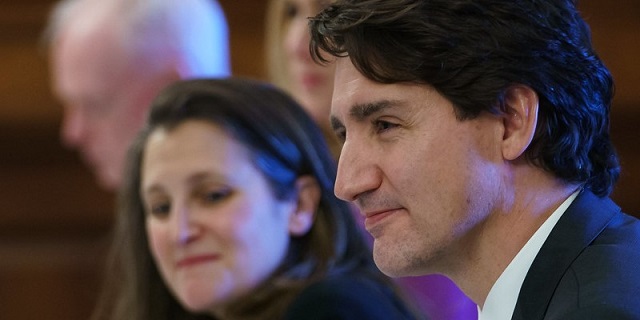
 Economy2 days ago
Economy2 days agoFederal budget’s scale of spending and debt reveal a government lacking self-control
-

 Business1 day ago
Business1 day agoBusiness investment key to addressing Canada’s productivity crisis
-
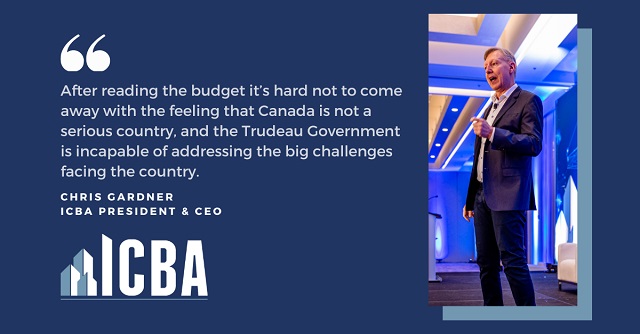
 Business1 day ago
Business1 day agoDoubling Down on Missing the Mark

